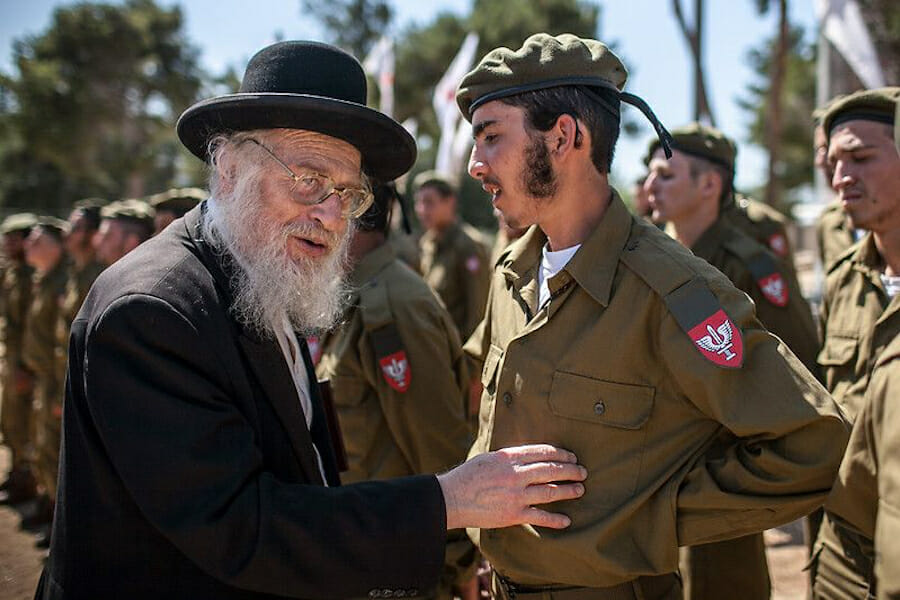
Women’s Rights in Israel, Is Iran Closer than we Think?
It would probably not be an exaggeration to say that on the international news stage Israel is known predominantly for the Palestinian conflict. The level of violence rarely drops enough for global reports to take interest in other issues in Israeli society. Considering the duration and the complexity of the struggle, the preference ensues almost naturally.
The subject of human rights reveals a similar skewing: Palestinians fight for their cause, engage public opinion, and generally bring attention to their plight. When the words “Israel” and “human rights” appear in the same sentence, chances are very high that the unresolved disputes about occupied territories and blockades will dictate the headlines. All this is usually true for socio-political currents within Israel itself. Usually – but not always. From time to time the defining national conflict recedes into the background, and others seize the front stage. The most recent one painfully underscored a long-standing antagonism between two communities in Israeli society: the secular and the ultra-orthodox.
Demonstrations in Beit-Shemesh
What rekindled the flames of opposition was a series of violations of women’s rights, particularly, the insistence of the strictly observing to segregate public transportation on gender basis, and to enforce severe modesty rules in various town neighborhoods across the state. A young secular woman was hassled to move to the back of the bus (she refused), while an eight-year-old girl, deemed inappropriately dressed, was spit upon and called a “shiksa.”
The incidents sparked a wave of mass protests: a demonstration in Beit-Shemesh, where the spitting took place, intensive media coverage, and general outrage within the lay circles; they also sparked more incidents. The young woman was invited by the minister of transportation for a conciliatory discussion, and later gave a speech in Beit-Shemesh.
In what has already become a tradition, both sides continue to blame each other, firmly entrenched in their sense of righteousness. Both bring up valid historical and political arguments to support their stance, one appealing to religious, another to democratic ideals. Segments of the population that sympathize with some of the claims from either party further entangle this contest of ideas, prone as it is to misrepresentation and demagogy.
The Ultra-Orthodox Community
In order to trace back the roots of the controversy, we need to return to the moment when its seeds were sown: the very inception of the state of Israel. In 1948, when independence was declared, ultra-orthodox Jews comprised several thousand people, all deeply steeped in the tradition of studying sacred religious texts – they did nothing else, subsisting solely on aid from diaspora.
Ben Gurion and his associates decided to exempt the students from conscription to the newly formed IDF for as long as they extended their studies, and could produce a reference from their Yeshiva. For the following decades, the ultra-orthodox community, now supported by the government as well as by diaspora, grew in stature and flourished. It is important to stress that for many Jews, religious or not, in Israel or outside it, this is not just a realization of a national dream – this is a historical triumph.
During that time, however, so many worldly managerial issues accumulated that their total appears to have the capacity to considerably dampen the enthusiasm if not extinguish it completely. After more than sixty years, the number of young men qualified for the exemption program has increased to several hundred thousand, over half a million (seven hundred thousand by some estimates) including the families.
This is an entire cross section of Israeli society that doesn’t officially work, doesn’t pay taxes, and doesn’t serve in the people’s army, all decreed by the law. The burden on secular citizens has grown, and for many become intolerable.
Political strength and representation in the Knesset have also increased, reflecting the growth in population. Viewed by left and right wing as neutral in matters outside the pragmatic (distribution of government help and preventing changes in exemption law), orthodox religious parties participated in most coalitions for the last twenty years. Cleverly maneuvering between the larger blocks, sometimes taking advantage of their rivalry, the much smaller religious parties continue to exert considerable influence, much larger than their actual size would warrant.
The Secular Community
Not all in the secular community view the blossoming of their faithful neighbors as a blessing. In fact, in early 2000s, a “Shinui” party, whose platform consisted mainly of the promise to end what their leader, Tommy Lapid, labeled as “parasitic leeching,” gathered a whopping 14 seats – a massive, surprise showing for a relatively unknown outfit. Many criticized the party for its limited agenda, saying it is based primarily on hate and intolerance, and predicting a swift decline. Both assessments turned out to be true.
However short-lived, the enormous and sudden success of “Shinui” (meaning “change” in Hebrew) revealed the measure of frustration the secular community harbored towards their religious counterparts. Other issues continued to feed the discontent: the Chief Rabbinate’s monopoly on marriage and funeral rituals, convictions of public figures in cases of corruption, confrontations with the police force, and more.
Until fairly recently, expressions of resentment have usually been limited to the media, in the form of political talk-shows and various reports, where politicians and activists from both sides discussed the situation and made suggestions on how to resolve it. There simply wasn’t enough day-to-day contact between the two groups for the hostility to spill to the streets. Ultra-orthodox observing folks live in closed societies in Jerusalem and Bney-Brak, and in clearly defined neighborhoods in Ashdod, Haifa, Rehovot, and a few other cities.
Together and Apart
But with an average rate of 7 children for a family, the self-imposed boundaries began to dissolve. Couples moved out of their parents homes to search new places to live in, places that had a long established secular population. Since religious Jews traditionally love a tight-knit community, they quickly form one, attracting more young couples, and purposefully expanding. Conflict, sparked by long-standing enmity, and fueled by differing, sometimes opposing views on basic lifestyle choices, was inevitable.
While those who “professionally” practice Judaism claim, mostly rightly, that they do not impose their way of life on secular residents, the pressure piles up nevertheless. When the opportunity presents itself, those who do not fit into the emerging mold will leave on their own accord, unable or unwilling to conform, exhausted by perpetual and unbridgeable incompatibility with their neighbors. When a neighborhood is largely religious, its roads are blocked on the seventh day and landlords cease from leasing apartments to secular folk. The transformation becomes complete.
As the ultra-orthodox community expanded, it also gained in local municipal power, and it was only a matter of time before it began to wield it. Segregation of women – a standard practice in the life of strict practitioners – became common in public space. In Jerusalem, advertisements showing exposed female arms were ripped off of city buses. In the military, a scandal erupted when religious soldiers refused to listen to a female sing (considered immodest), citing their rabbi’s authority. Women in buses are being hassled to move to the back of the vehicle. In Beit-Shemesh, girls are being spit upon and called insulting names.
The Future of Status Quo
The overall condition of (Jewish) women’s rights in Israel remains robust. Take the military example: in 2011, after two years of grueling training, five young women soldiers have completed the prestigious air force training program, and received their aviator badges. At the other end of the aisle, the IDF continues its integration program of recruiting ultra-orthodox young men willing to serve and partake in the security burden – ensuring they have minimal contact with the opposite sex.
The political landscape, though far from Scandinavian uniformity, contains several important oases: the head of the opposition is a woman, and so is the leader of the Labor party, the charismatic Shelly Yechimovich. Both condemned the insults and made speeches, varying in tone from cautionary to reassuring. However, neither of the female politicians seemed willing to tackle the core issue behind the Beit-Shemesh demonstrations: the loosening of the separation between the church and the state. The persistent attack on the status quo gnaws at the fringes with slow determination – it doesn’t strike immediately at the heart. The consequences can be devastating. Many secular Israelis view the abuse of women as a symptom of the state’s descent into a theocracy. Some despair and choose to leave the country.
Political Courage
It’s clear that the conflict must be resolved at the highest political echelons – and that both sides need to compromise. Instead of military duty, the ultra-orthodox can be given a community service alternative; this will allow them to leave the Yeshiva and join the labor market. Secular citizens should receive broader Jewish education and prepare to embrace their neighbors as equals. Mutual contribution will lead to mutual respect.
Integration and acceptance is not a dream, but a necessity that cannot be postponed and ignored without consequence. The exemption law must be changed – an initiative too readily regarded a political kiss of death – to prevent contemporary Israeli society from disintegrating. Members of the religious sector who decry the “lifetime student” mentality and the poverty that comes with it can join the call for a structured solution, which will enable the ultra-orthodox to merge with the rest of the society while retaining their values and faith. This is not impossible, but it does require true, courageous leadership.
There is a new term the skeptics have adopted regarding this issue, it’s called “Iranization.” While the Ayatollah-led state intimidates Israel with a nuclear program, it is Iran’s radical religious ideas, they believe, that are far more threatening. It’s up to the people of Israel – and their leaders – to prevent their homeland from turning into something they abhor and fear so much.
